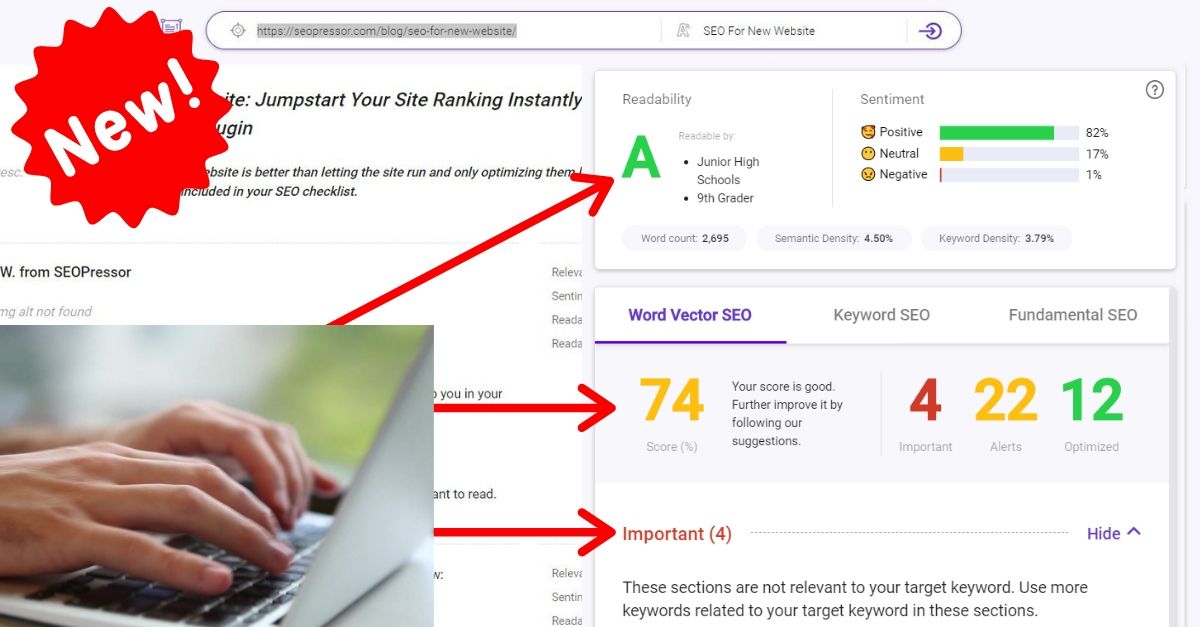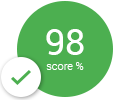Steph W. from SEOPressor


...help you check your website and tell you exactly how to rank higher?


80
score %
SEO Score

Found us from search engine?
We rank high, you can too.
SEOPressor helps you to optimize your on-page SEO for higher & improved search ranking.
By daynelee on July 31, 2025
Common SEO Mistakes Found on WordPress Sites (and How to Fix Them)

If you’re running a site on WordPress, you’ve probably installed a few SEO plug-ins, tweaked some metadata, and assumed everything’s in good shape. But even well-maintained WordPress sites often suffer from quiet SEO issues that slow growth, bury pages in search results, or confuse Google altogether. And because these mistakes are often tucked away in settings or baked into themes, they’re easy to overlook until rankings start slipping or traffic dries up.
This isn’t about chasing perfection. It’s about fixing what holds your site back — the stuff that keeps your content from performing even when the quality’s there. Whether you’re managing your own blog or handling SEO for clients, identifying these recurring problems is the first step toward meaningful improvement.
WordPress makes it surprisingly easy to sabotage your own visibility without realising it. One example is the “Discourage search engines from indexing this site” option, which some users leave enabled after staging or redesign phases. That single checkbox can quietly prevent your entire site from appearing in Google.
Permalink structures are another common pitfall. Sticking with the default settings (such as?p=123) doesn’t provide search engines with any context and can limit how well individual pages rank. Switching to a custom structure that uses post names is a simple yet often overlooked step, especially on older installations.
Canonical tags, too, can quietly mislead search engines when incorrectly set up. If duplicate content exists across categories or archives, and you don’t clarify the original source, your authority gets split or diluted. Many plug-ins automate canonical URLs, but they’re not always right. Spot-checking them manually, especially on cornerstone pages, often reveals hidden issues.
Even something as simple as indexing attachments can bloat your sitemap with near-empty pages. These don’t just fail to rank — they can drag down your domain’s performance overall. Sorting through your indexable content and pruning anything useless is time well spent.
WordPress offers flexibility through themes and plug-ins, but that same flexibility comes at a cost when they clash. Bloaty themes with heavy JavaScript, oversized images, or embedded third-party tools can significantly impact your site’s load time. Even visually clean themes sometimes come loaded with unnecessary functions that aren’t visible on the front end.
It’s not just speed that suffers. Accessibility and mobile responsiveness are often overlooked when stacking plug-ins. Page builders, in particular, may inject complex layout code that performs poorly on mobile or fails basic accessibility checks — two factors Google now weighs heavily.
Layer on multiple plug-ins with overlapping tasks, like SEO, caching, and schema management, and you’re likely to end up with script conflicts or duplicate markup. These conflicts can quietly disable core features without alerting you. Debugging them can take hours, and in some cases, entire sections of a site go unindexed due to invisible technical errors.
If your site’s speed and structure still feel off despite your efforts, a WordPress SEO agency can often identify hidden conflicts between plug-ins or outdated theme code. Agencies with hands-on technical experience are better equipped to delve into log files, review reports, and examine source code in ways that surface the root cause more quickly than trial and error ever could.
The bottom line is that performance issues aren’t always visible. A fast-looking front page doesn’t mean your category archives, blog posts, or mobile versions are running clean. Each layer of your tech stack needs its own scrutiny.
Publishing regular content is a good habit, but it only helps SEO when that content fits into a broader structure. One-off blog posts that target vague keywords or don’t connect to related pages tend to drift in search rankings. They exist, but they don’t really work for you.
A big part of the problem is thin or isolated content. It might hit a keyword, but without supporting context — like internal links, clear headings, or category relevance — it doesn’t signal much authority. Google’s algorithm weighs how content fits into your overall site, not just how well a single post is written.
Internal linking is another easy-to-miss factor. Pages that aren’t linked from other parts of your site can fall out of your crawl path entirely. Even cornerstone content can underperform if it’s buried deep or isn’t supported by related posts.
Then there’s the temptation to write for algorithms instead of users. Over-optimised articles packed with exact-match phrases or generic advice often rank poorly. Not because they’re spammy, but because they lack depth or intent. Google’s updates increasingly reward content that answers real questions in a natural way, not articles built to chase volume.
The fix is more structural than creative. Building clear content clusters, aligning each post with a category that makes sense, and considering how users navigate your site will do more for your rankings than chasing trending topics with no long-term plan.
A site that loads slowly or behaves unpredictably on mobile devices won’t just frustrate users — it’ll drop in rankings, no matter how good the content is. Core Web Vitals, which measure things like load speed, visual stability, and interactivity, now directly influence how Google evaluates a page’s quality.
WordPress sites often encounter problems due to the cumulative weight of themes, fonts, animations, or embedded media. Even one poorly optimised plug-in can cause a layout shift that tanks your score. And the tools meant to help with speed — like caching or CDN integrations — only work when configured correctly. If they’re stacked on top of each other, they might even cancel each other out.
Mobile usability is just as critical. A design that looks fine on a desktop can turn into a scroll-heavy mess on smaller screens. Menus that don’t collapse properly, buttons that overlap, or pages that require zooming all contribute to poor user signals.
It’s not enough to run a single PageSpeed test and call it a day. Core Web Vitals can vary depending on the device, location, or network strength. Regular audits that incorporate field data, not just lab scores, provide a more accurate picture of how real users experience your site.
Optimising here is more than a technical task. It’s about delivering a site that behaves the way users expect — fast, clear, and stable from the moment they land to the moment they leave. And in search terms, that usability directly supports higher visibility.
Search engines change constantly, but most WordPress SEO mistakes don’t require reinventing your site every time Google updates its ranking rules. The biggest wins come from addressing underlying issues that persist over time, including crawlability, site speed, content quality, and mobile performance.
The trouble is, many site owners chase temporary fixes. They install new plug-ins after every algorithm shake-up, rewrite content to match trending advice, or make abrupt structural changes without a long-term plan. This creates more room for errors, not fewer, especially if no one’s tracking how those changes affect rankings.
Lasting SEO improvements stem from setting up regular site health checks, keeping your theme and plugins updated responsibly, and making content decisions based on usefulness rather than traffic forecasts. That means checking for broken links, removing outdated pages, and reviewing how users navigate your site, not just what gets the most visits.
Using a single source of truth — whether that’s a weekly audit checklist or a trusted reporting tool — keeps SEO grounded in facts, not guesswork. And while tools can help highlight problem areas, they can’t fix the fundamentals. That still comes down to knowing how your WordPress setup works, where it breaks, and what your visitors need from it.
Sponsored post
Updated: 19 November 2025


Save thousands of dollars (it’s 100x cheaper)

Zero risk of Google penalty (it’s Google-approved)

Boost your rankings (proven by case studies)
Rank High With This Link Strategy
Precise, Simplified, Fast Internal Linking.
